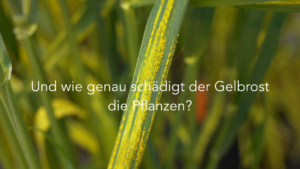
Infection with brown and yellow rust
About the first tests of susceptibility to fungal pathogens.
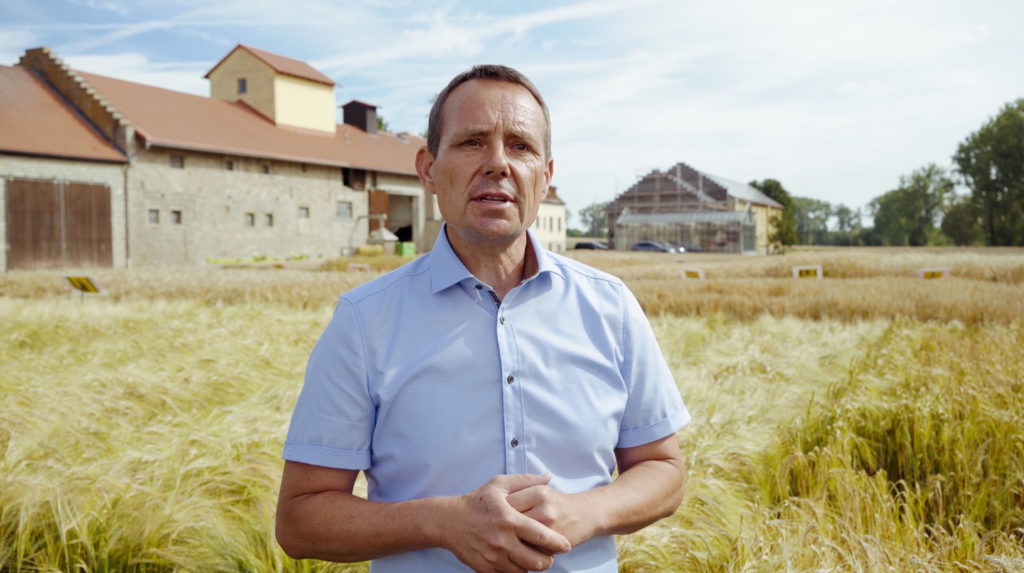
Dr. Streng, you are one of the breeders participating in the PILTON project. Please introduce yourself briefly.
I run a medium-sized, family-run business in the fourth generation and am a plant breeder with heart and soul. We are specialists in cereals. My second passion is science. It’s the right combination to match innovative ideas and traditional breeding as breeder and thus to breed the best varieties for agriculture.
The aim of the PILTON project is to develop a fungus tolerant wheat. How did you come up with this characteristic?
It was important for us to find a trait that is of great importance for agriculture, and there fungal infection is an important issue. In recent years – partly as a result of climate change – we have been experiencing an increasing number of fungal infections, particularly in the area of rust. And that is why the decision was made to focus on fungal tolerance as a trait to work on. We face the challenge of reducing the use of plant protection products. A good tolerance level of plants is an important prerequisite for this.
We face the challenge of reducing the use of plant protection products. A good tolerance level of plants is an important prerequisite for this.
What exactly are the benefits for farmer?
For farmers it is important to have a variety that is as tolerant as possible to fungal diseases. From plant germination to harvest, there are various fungi constantly trying to damage the plant. With the broad-based fungal tolerance we are striving for in this project, one that is not only effective against a specific fungal infestation, we want to offer the farmer a basic protection against the important fungal diseases stem rust, leaf rust, septoria and fusarium for as long as possible. If it is sucessful, farmers will have to use fewer plant protection products and can therefore save operating costs whilst protecting the environment.
Breeding varieties with tolerances or resistances is one of the great challenges in plant breeding. Why is it so costly and what opportunities do the new breeding methods offer?
In plant breeding, we are always working on continuous improvement, i. e., on the adaptation of cultivated species to their environment. A very important area is the adaptation to emerging diseases or to changing pathogens. This means that even if we have a tolerant variety today, that does not mean that it will still be tolerant in five years’ time. The virulence spectrum – that is what we call it – of the pathogen changes, and that is why we need to constantly improve its properties. And this is a typical task of us breeders. We are constantly on the move, looking for new tolerances and then introduce them into the existing material in the classical way via crossbreeding and selection. It is a never-ending process and through new breeding methods we now have the opportunity to be faster and more precise.
What is the difference between new breeding methods and classical breeding methods?
The way CRISPR and similar technologies work is easiest to explain when compared to the way we have been working so far. Whenever we wanted to create new traits, we mutagenised plant material, causing very small changes in the genome. But they were not arranged in an orderly fashion, but located just somewhere, and we had to find exactly these changes like a needle in a haystack. This is a very complex and time-consuming method, but it can certainly be successful. With CRISPR, it is now possible to induce these changes at a precise location in the genome – exactly where I want them to be. This is exactly the great advantage and the groundbreaking feature of CRISPR. I can work precisely. I save myself a lot of time, a lot of money, and the prospects for success are much higher.
Choosing wheat, you have opted for a complex crop. What makes working with wheat so complicated?
In research projects, winter wheat is certainly one of the most difficult and costly crops. What is special about our cultivated wheat is that it is composed of three genomes. It has three complete sets of chromosomes. If I want to induce a modification, I have to make it on all three of these genomes. That is what makes it so complex. Since we wanted to carry out a practical project, it makes sense to show that this technology can be a powerful tool for us, especially in such a difficult crop as wheat.
Will all companies be able to use the new breeding methods?
With the new methods we are breaking new ground. Here we have a technology such as CRISPR/Cas, for example, which is protected by patent and linked to certain property rights. We are facing challenges here. On the one hand with the technology, but also with the feature that we would like to introduce. We have to approach this cautiously. We have to find out how we can find ways, even as small and medium-sized enterprises, as an entire industry, to ensure that nobody is excluded or taken advantage of. This is a task that cannot be solved by one breeder alone.
We have to find out how we can find ways, even as small and medium-sized enterprises, as an entire industry, to ensure that nobody is excluded or taken advantage of. This is a task that cannot be solved by one breeder alone.
How many companies support the project?
It became clear very quickly that almost all companies were interested in participating in this project. This means that we have almost 60 companies on board, which means almost all seed companies with their own breeding programme. This is a very strong commitment to this project and the questions we want to answer. Normally we work together in bi- or trilateral projects, but here almost the whole industry is involved.
What new developments will plant breeders have to prepare for?
So far, we have been working very hard on plant variety protection. But with the new breeding methodsm we will now also have to tackle patent protection issues. On the one hand, it is about facilitating this technology, but also about setting the framework conditions for us as a breeding industry – fair access for all companies, large and small, international and local breeders.
In the end, social acceptance will also determine whether there will be new plant varieties in the future whose improved properties have been bred using the new breeding methods. What is your idea of how this social acceptance can be achieved?
In my opinion, two points are very important here. One is transparency, to deal openly with the introduction of new methods. Secondly, we will be to render proof that this method really does have an advantage, not only for farmers, who will receive a secure yield, but also for the consumer, for society and for the sake of saving plant protection products in the interest of a more sustainable agriculture. If we provide this evidence in transparent way, this shall mark one possible way how we can obtain public acceptance.
Interview from the 20.07.2020

About the first tests of susceptibility to fungal pathogens.
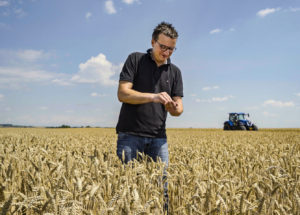
Farmer Bernhard Huber on crop protection and fungal diseases.
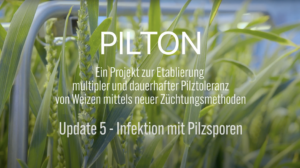
The winter wheat trials have started and now we are waiting for the first results
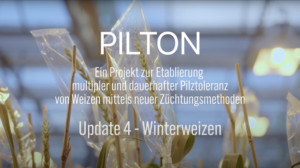
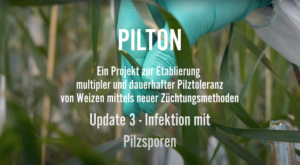
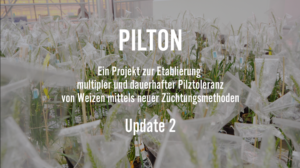
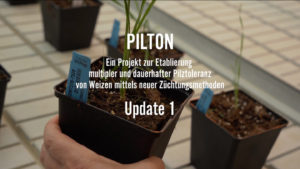
Dr. Dietmar Stahl, scientific director of the Pilton project, explains the current status in the video.